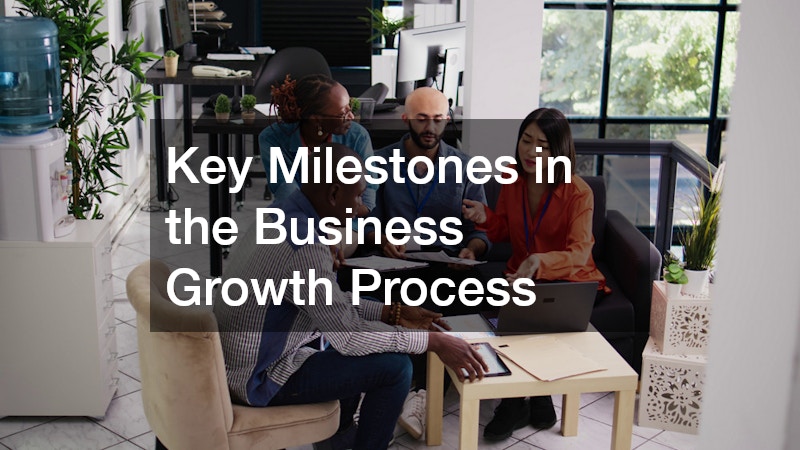Understanding the Business Growth Process: Key Milestones and Pitfalls to Avoid


Growing a business is rarely a straight path. It involves a sequence of milestones, challenges, and strategic decisions that determine whether your company thrives or stalls. For business owners and managers, understanding the business growth process is crucial to navigating expansion successfully. By recognizing the stages of growth and avoiding common pitfalls, you can make smarter choices, allocate resources effectively, and stay ahead of competitors.
This article explores the essential milestones in the growth journey, the hurdles you may encounter, and strategies to avoid setbacks, helping you lay a strong foundation for sustained success.
What is the Business Growth Process and Why Does It Matter?
The business growth process is the structured journey a company takes from its early beginnings to becoming a mature, competitive force in the market. It encompasses everything from securing your first customers to scaling operations, expanding into new markets, and innovating to stay relevant.
Understanding this process matters because it:
- Helps identify the right time for strategic moves like hiring, investment, or market entry.
- Guides resource allocation to avoid overspending or missing opportunities.
- Prepares your team for challenges that often arise in each growth stage.
Many companies fail not because of a lack of opportunity but due to poor navigation through growth stages. A well-planned process can prevent costly missteps and position your business for long-term profitability.
Key Milestones in the Business Growth Process
Every thriving company passes through specific milestones on its journey. While these may vary depending on industry and size, the 7 stages of business growth provide a helpful framework for understanding progress and making informed decisions.
Common milestones include:
- Idea Development and Validation – Defining your value proposition and confirming demand.
- Market Entry – Launching your product or service and acquiring your first customers.
- Operational Stability – Streamlining processes and ensuring consistent quality.
- Team Expansion – Hiring and training staff to support growing demand.
- Market Expansion – Entering new regions or targeting additional customer segments.
- Innovation and Diversification – Developing new offerings to remain competitive.
- Sustainable Leadership – Building systems that ensure growth continues without over-reliance on one person.
These milestones provide checkpoints for evaluating progress and determining the best course of action at each stage.
Common Pitfalls to Avoid in Your Growth Journey
While growth can be exciting, it’s easy to fall into traps that derail progress. Knowing these pitfalls can help you plan ahead and minimize risks.
Major pitfalls include:
- Scaling Too Fast – Expanding before stabilizing core operations can cause inefficiency and quality issues.
- Neglecting Cash Flow – Growth requires capital; mismanaging finances can create bottlenecks.
- Ignoring Market Feedback – Overconfidence can lead to launching products or services that customers don’t want.
- Poor Talent Management – Hiring too quickly or without a cultural fit can damage productivity and morale.
- Failure to Innovate – Sticking to outdated offerings makes your business vulnerable to competitors.
Avoiding these mistakes requires discipline, constant evaluation, and flexibility to adapt when necessary.
How to Successfully Navigate the Business Growth Process
Reaching your growth goals takes more than ambition—it requires a clear plan, strong leadership, and adaptability. Business owners and managers should approach each milestone with both confidence and caution.
Best practices for navigating growth include:
- Set Measurable Goals – Break your vision into achievable quarterly or yearly targets.
- Track Key Metrics – Monitor performance indicators like customer acquisition cost, retention rates, and profit margins.
- Invest in Talent – Build a capable team and provide ongoing training to maintain high performance.
- Stay Customer-Centric – Make data-driven decisions based on client needs and preferences.
- Diversify Revenue Streams – Explore complementary products or services to protect against market shifts.
By combining strategic foresight with operational discipline, you can avoid growing pains and maintain momentum.
When Should You Rethink Your Growth Strategy?
Even with a solid plan, market conditions, technology, and customer behavior can change rapidly. Knowing when to reassess your strategy is critical for staying competitive.
Signs it’s time to reevaluate include:
- Declining sales despite marketing efforts.
- Increased operational costs without matching revenue growth.
- Customer dissatisfaction or reduced retention.
- Competitors gaining significant market share.
When these warning signs appear, take a step back. Revisit your core business model, gather feedback from your customers and team, and adjust your approach before the situation worsens.
Final Thoughts
The business growth process is both exciting and challenging. By understanding its key milestones, recognizing potential pitfalls, and staying agile in your strategy, you can increase your chances of building a business that not only survives but thrives. For business owners and managers, growth is not just about expansion—it’s about creating a sustainable model that adapts to change and delivers consistent value to customers.


